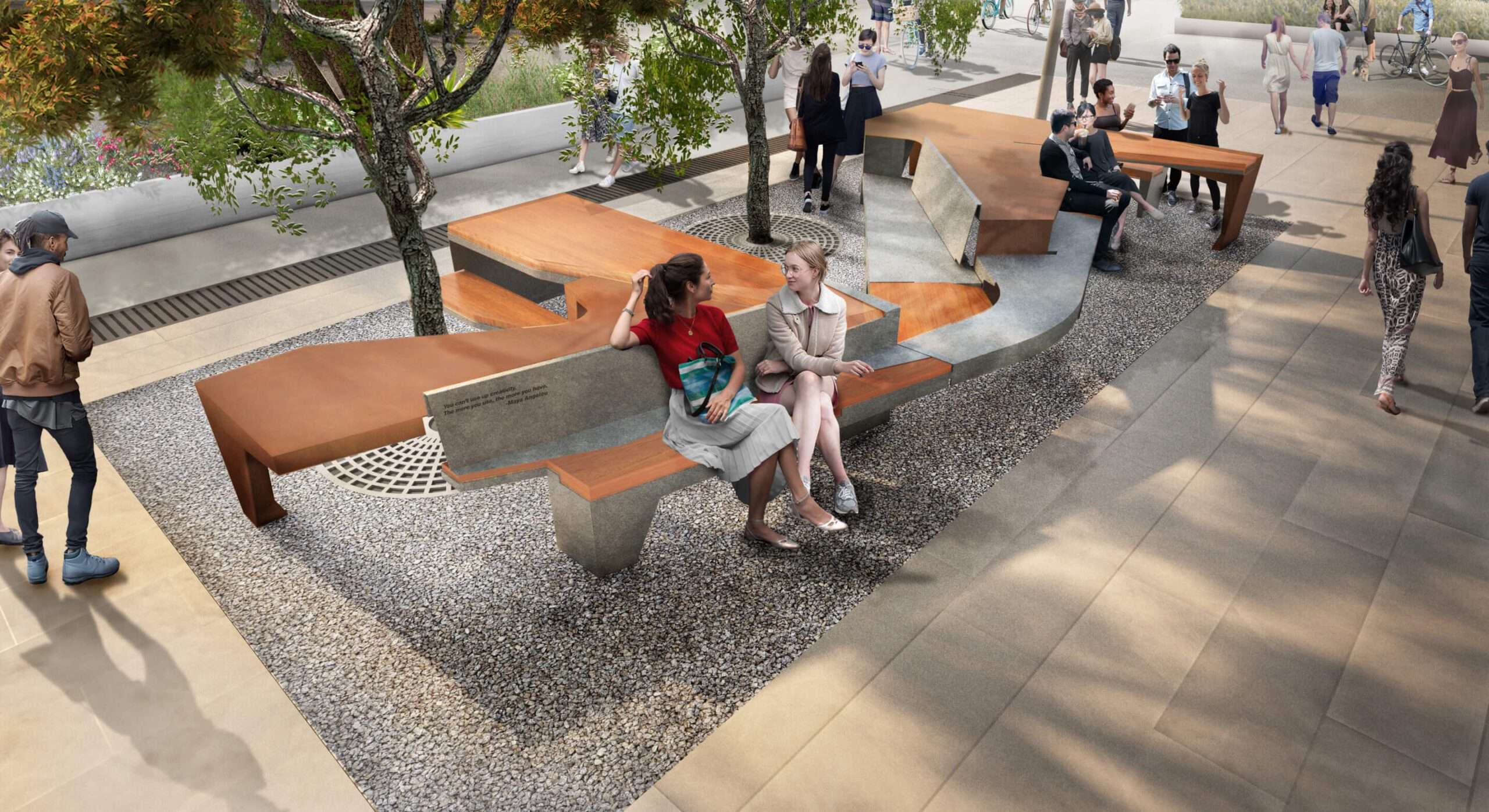In conversation with Paul Flowers, Chief Design Officer of LIXIL Global Design
Seamlessly transforming trends and insights into experiences and a dream workplace for designers – LIXIL Global Design is a true celebration of cultural diversity, collaboration, and creativity and is based in some of the most cosmopolitan cities in the world, from New York to London, Tokyo, Singapore, and Shanghai.
As the creative arm of LIXIL – it’s the in-house design team of brands such as GROHE, American Standard, INAX, and many more.
The team’s multifaceted skill sets harmoniously combined with the latest technologies and a unique approach to design enable and empower them to skillfully create their best work – which has been recognized with over 600 international design awards!
Brilliantly embodying a consumer-centric design at the heart of everything they do – their goal is to make better homes a reality for everyone, everywhere.
“Every brand in the LIXIL portfolio shares this purpose and brings it to life in its distinctive way, defined by each brand’s values and the cultures and communities it serves. Our aim is to design and develop relevant, purpose-driven products that solve real-life challenges and value to everyone’s daily lives!” says LIXIL Global Design.
Given this, we wanted to explore and discover more about their unique approach to design and decided to go behind the scenes with the Chief Design Officer and Chief Brand Identity Officer of LIXIL Global Design.
What does the Chief Design Officer of LIXIL Global Design do? And what responsibilities do the designers who are part of the team have?
Paul Flowers:
“Great question! And, it’s a question, I guess, that all chief designers wrestle with daily.
Firstly, I’m a passionate industrial designer. As a product designer, I studied industrial design in Newcastle in the UK. My whole life was about progressing and improving my craft — my understanding of design.
Then, as you get older, and move into, let’s say, more senior positions within organizations, you start to work that craft into an understanding of the dynamics and challenges of the organizations and, in particular, an understanding of consumers and their journeys. You’re starting to look beyond just industrial design — and examine the entire consumer experience.
So my job as Chief Design Officer is to put in place a clever global design team that can answer some of those challenges: business challenges, challenges within the external environment, and challenges for consumers in their daily lives.
It’s no longer just a focus on the craft of design. It’s really about empowering our teams of designers and ensuring they have the tools, the flexibility, and the freedom to deliver solutions and products for consumers that will be relevant — adding value to their daily lives and, ultimately, society as a whole.”
What defines LIXIL’s unique approach to design? What are your goals, values, and vision as a design team?
Paul Flowers:
“At LIXIL we have an overarching concept: “to make better homes a reality for everyone, everywhere.” And that, really, is our purpose.
It covers homes for people who may have little or no access to s through to homes that would incorporate the premium luxury brands in our portfolio such as GROHE SPA — where we’re considering details such as customization and color, material, and finish. So, within our brand portfolio, we cover a real spectrum.

First of all, our approach is to really understand who we’re creating and designing products and spending large, and increasing, amounts of time discerning and evaluating consumer needs and deciding the particular brand and brand lens that we’re going to answer those needs.
And that, in essence, is our unique approach we’ve developed a concept called “pre-search” to describe it.
This is conducting research upfront — not at the end like many companies do. Lots of research is what I’d call comparative research. For me, that just emanating products in front of consumers and asking them “Do you like this, more than this?” — and then simply going away and developing the most liked product. We don’t do that.
Instead, we do our research at the beginning of the process. We aim to identify and observe unarticulated needs — beyond what consumers tell you they need. We send the design team out to all the major trend fairs and cultural exhibitions and, of course, we work with several global research organizations.
In practice, for even the most articulate consumers, it’s very difficult for them, firstly, to tell you what they want and then, secondly, to project that into the context of the future.
For customers, with access only to today’s information, it’s not easy to articulate how a project or concept will work in one, two, or three years’ time. That’s why we conduct expert interviews, and partner with leading trend consultants, and teams to go out and uncover insights and trends. All that information is brought back and synthesized— providing us with an extremely powerful and actionable perspective on the future. And it’s this process, this “pre-search”, that keeps us consumer-centric — and keeps us relevant.”
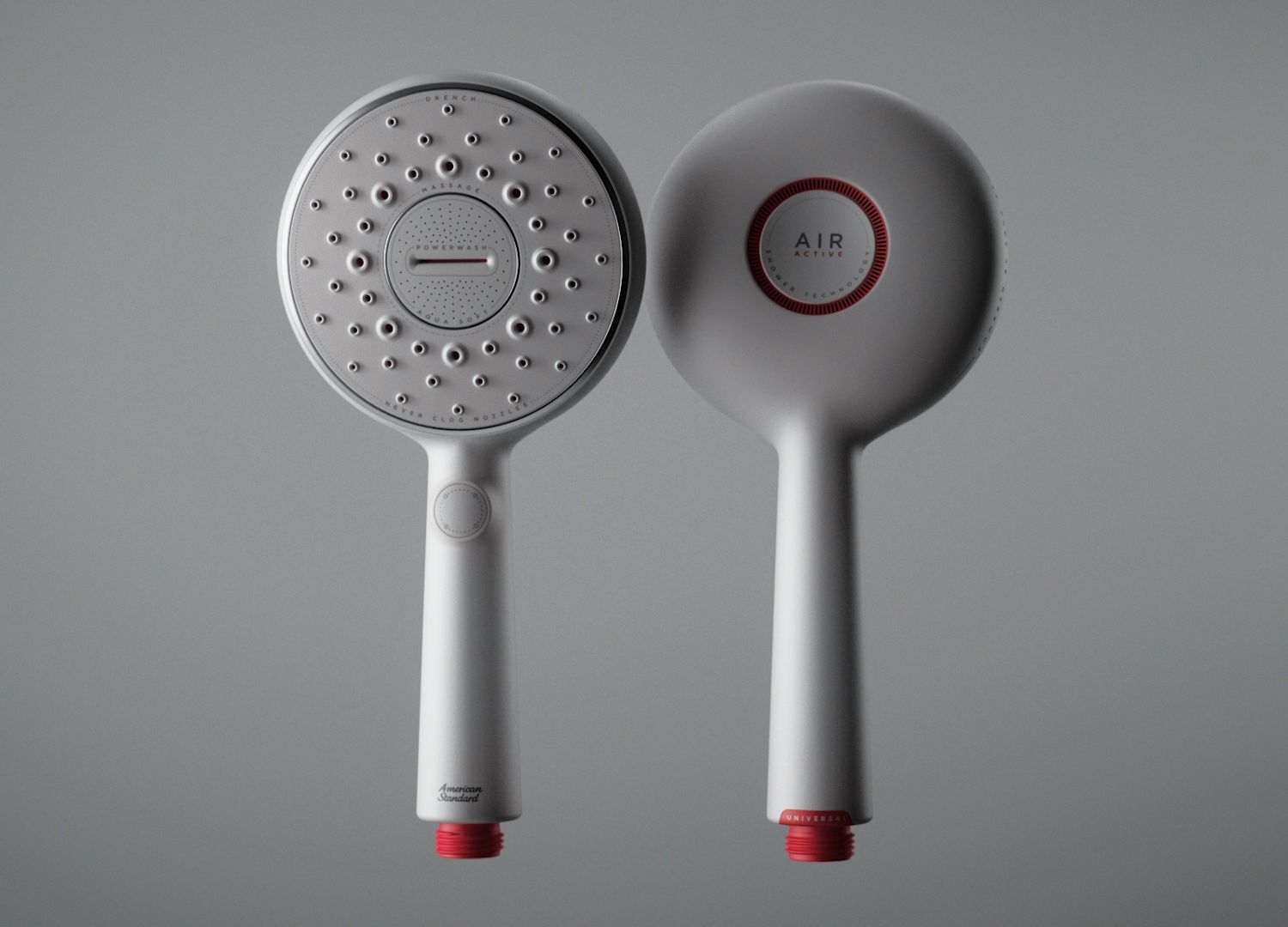
LIXIL Global Design is the interface between numerous brands and products used every day by millions of people around the world. How do you ensure continuity and consistency in your design?
Paul Flowers:
“Yes, that’s one of the biggest challenges.
First of all, we have a permanent presence in some of the world’s largest cultural hubs. For example, we have Global Design Team studios in Tokyo, London, New York, Singapore, Dusseldorf, and Sghai these allow us to pick up what’s going on the regional signals and trends.
These multicultural, multidimensional touch points all feed in, giving us a local understanding of all our markets. We try to understand who we’re designing for — that might be a certain demographic, it might be a specific region, or a particular user group.
That’s how we keep relevant — and that’s how we aim to create global solutions that add universal value to all our consumers’ everyday lives.”
At present, what are the technologies that are having the greatest impact on your approach to designing and improving products — in terms of sustainability and performance?
Paul Flowers:
“Our objective is to get our products into consumers’ hands in the most responsible way possible. We look at everything — from production to packaging to how the products are shipped.
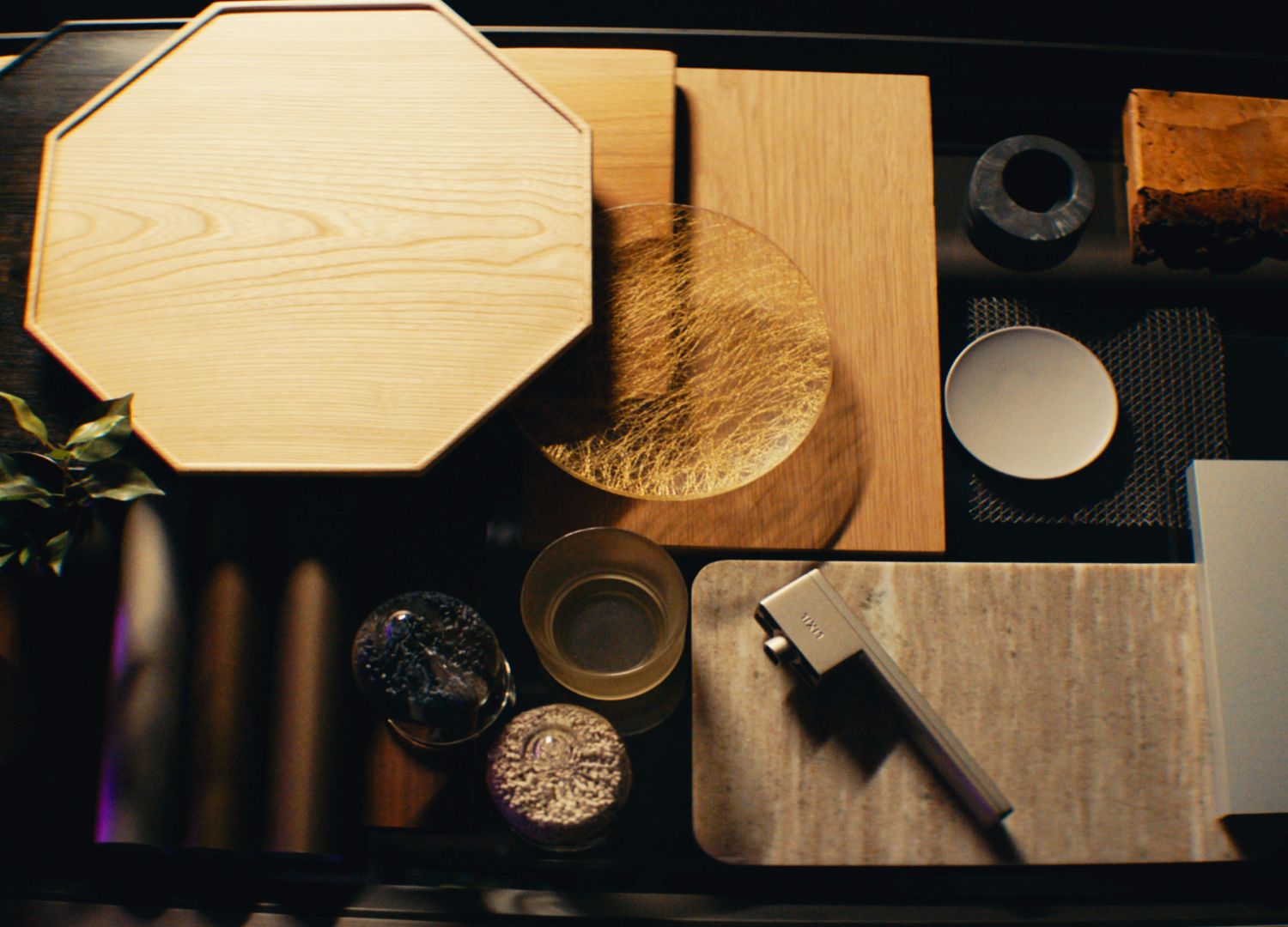
We’ve dramatically reduced plastic parts in all our packaging — and we work closely with our supplier partners to encourage them to do the same.
We’re also developing processes such as 3D metal printing — which we use with our premium brand GROHE SPA. It allows us to create complex, beautiful forms which deliver water in a truly wonderful, almost magical, way — with far less material and zero waste.
On the production side, we’re working to eliminate waste at every stage. We even recycle metal particles in the air — we actually suck them in and recycle them! There’s no waste whatsoever.
We’re conscious, though, that most energy consumption is still in the hands of the consumer.
So, we spend lots of time designing small changes to the products that allow consumers to be more responsible in their consumption — but still enjoy the experience.
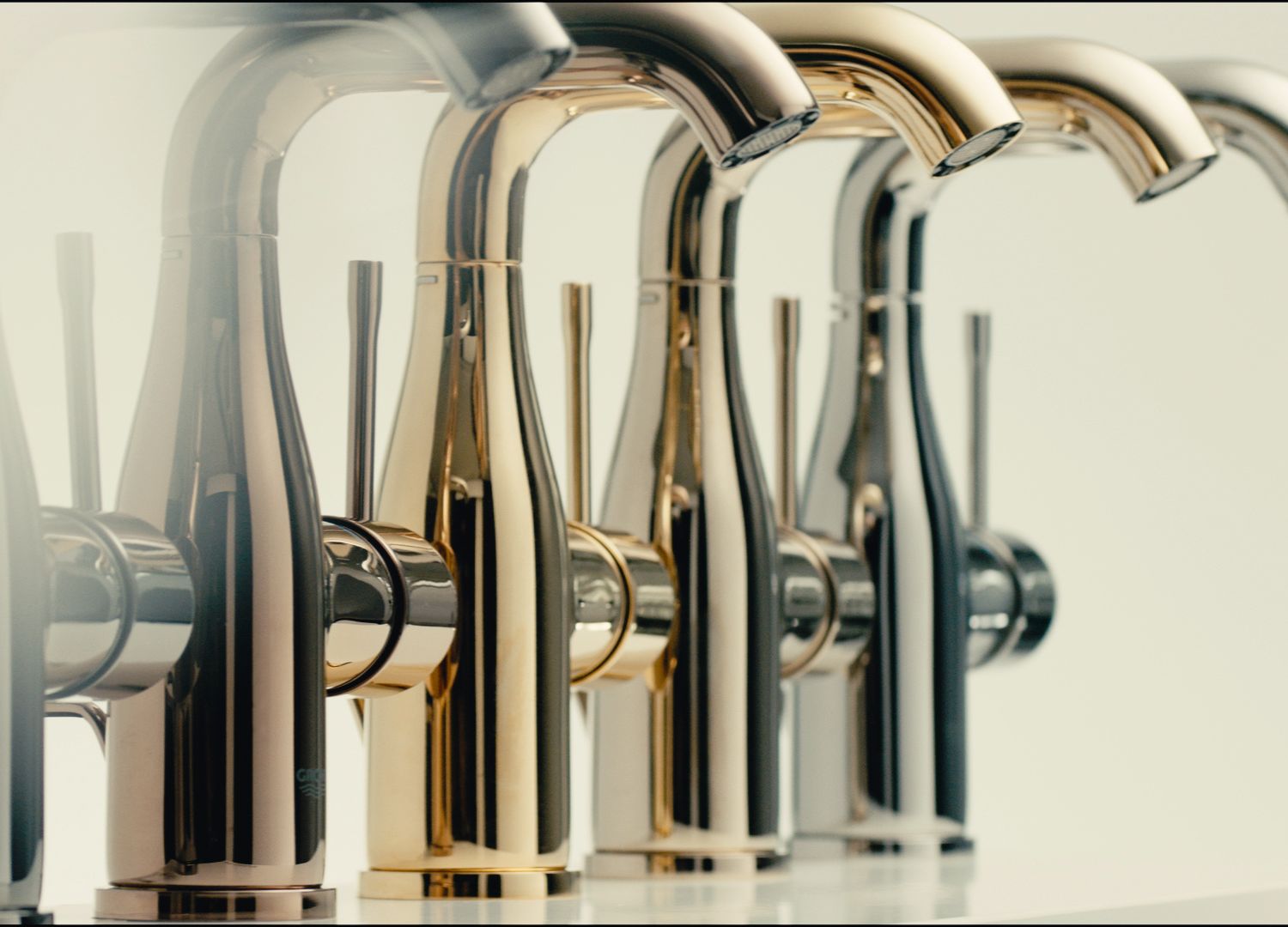
For GROHE, we have a concept called “EcoJoy” — it stands for ecological enjoyment.
Our challenge is: how can we deliver an amazing experience for the consumer and, at the same time, allow them to reduce consumption?
With our faucets, for example, we’ve rotated the position of the cartridge on our mixers so that water flow starts at room temperature — rather than a warmer, ambient temperature. Our research told us that consumers don’t need that. They just want to wash their hands.
Our showers have a simple “water reduction button”. Consumer research told us that showering is broken into active and passive states. Active processes, such as rinsing shampoo from your hair, require a higher flow of water than more passive processes. We’ve just made it simple for consumers to switch between the two — and reduce their overall energy consumption.
At LIXIL, we’re extremely conscious of the part we can play in reducing global consumption — more than one billion people use our products every single day.
That’s a huge responsibility — obviously in terms of consumption but also in terms of how we’re making a billion people feel every day. Put simply, if you have a great shower experience in the morning, you’re more likely to go on to have a great day.
So, that’s a big rational and emotional responsibility that we, in the Global Design Team, share every day. It’s something we discuss all the time — and take incredibly seriously.”
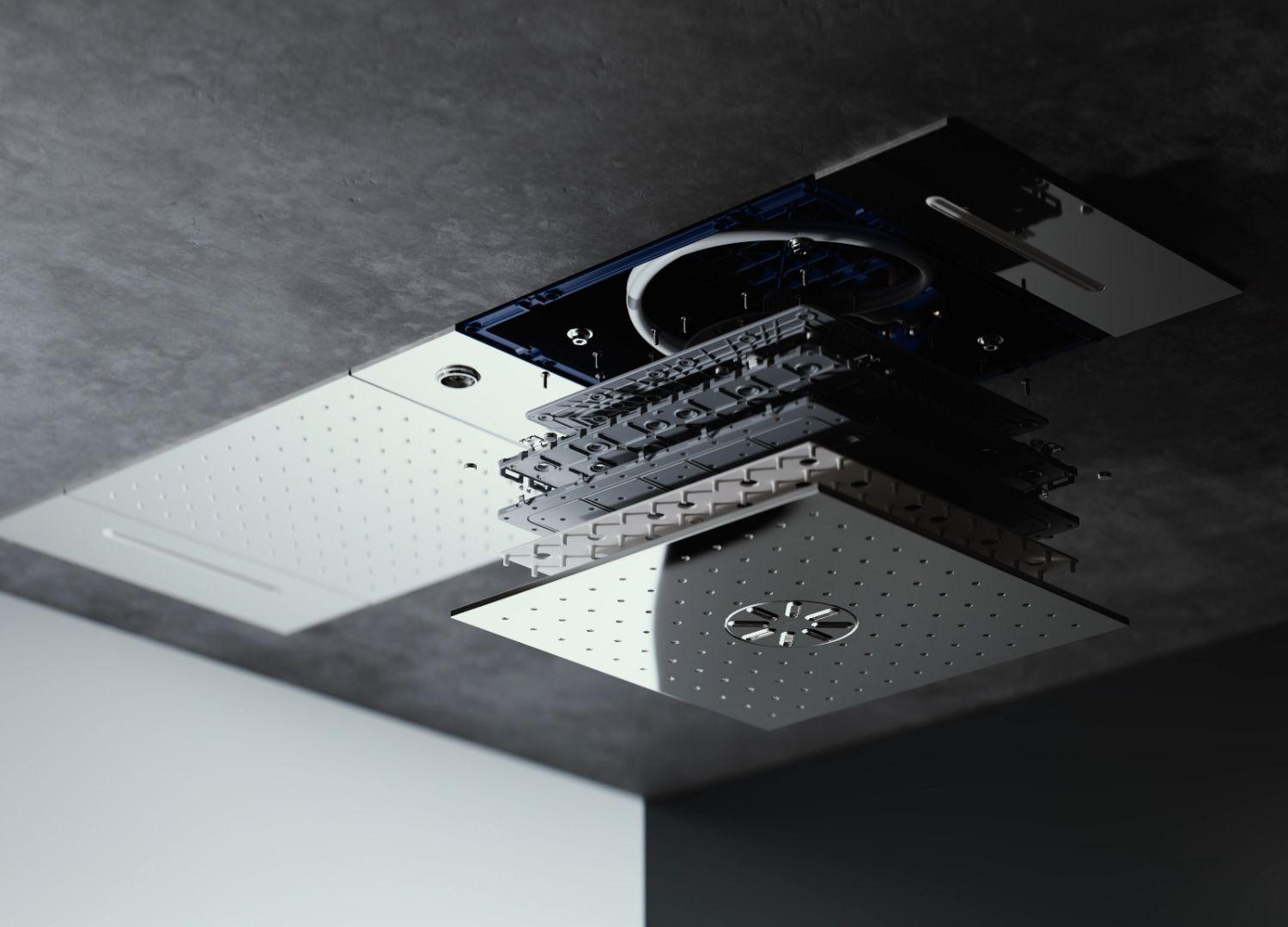
On the consumer side, which technologies are defining and improving the products you create — in terms of user experience?
Paul Flowers:
“There are some obvious things that spring to mind — water filtration, of course, is a great example.
We know people go out and purchase mineral water in plastic bottles. It’s shipped from countries all over the world — countries that might not even have enough clean water for the indigenous population. And obviously, that whole process comes with a lot of inherent waste.
So, several years ago we started to invest in water systems and filtration. We created products such as GROHE Blue Water Systems that filter, chill, and carbonate water. Consumers can have that convenience and experience — without all the waste. Removing unnecessary plastic from day-to-day use has a huge impact.
That’s just one example. We’re constantly looking at ways in which we can utilize technology to reduce consumption — but it is always reutilized with the consumer in mind.
What we don’t do is develop random technologies — and then go out looking for customers for them. For me, it’s the consumer that defines the opportunity — it’s our challenge to understand consumers’ needs and develop valuable solutions to their specific problems.
That’s really why we have an in-house design team. We work extremely closely with our marketing teams and engineers to make sure we understand those consumer insights and ensure we’re developing technologies that are both relevant to — and valued by — our consumers.”
What trends will we face in the future?
Paul Flowers:
“At LIXIL, we’re looking at macro trends — that’s long-term societal trends. The products we make are durable. They have a longevity, a kind of permanence — so this long-term view makes sense.
The three main macro trends weave identified are urbanization, sustainability, and health and well-being.
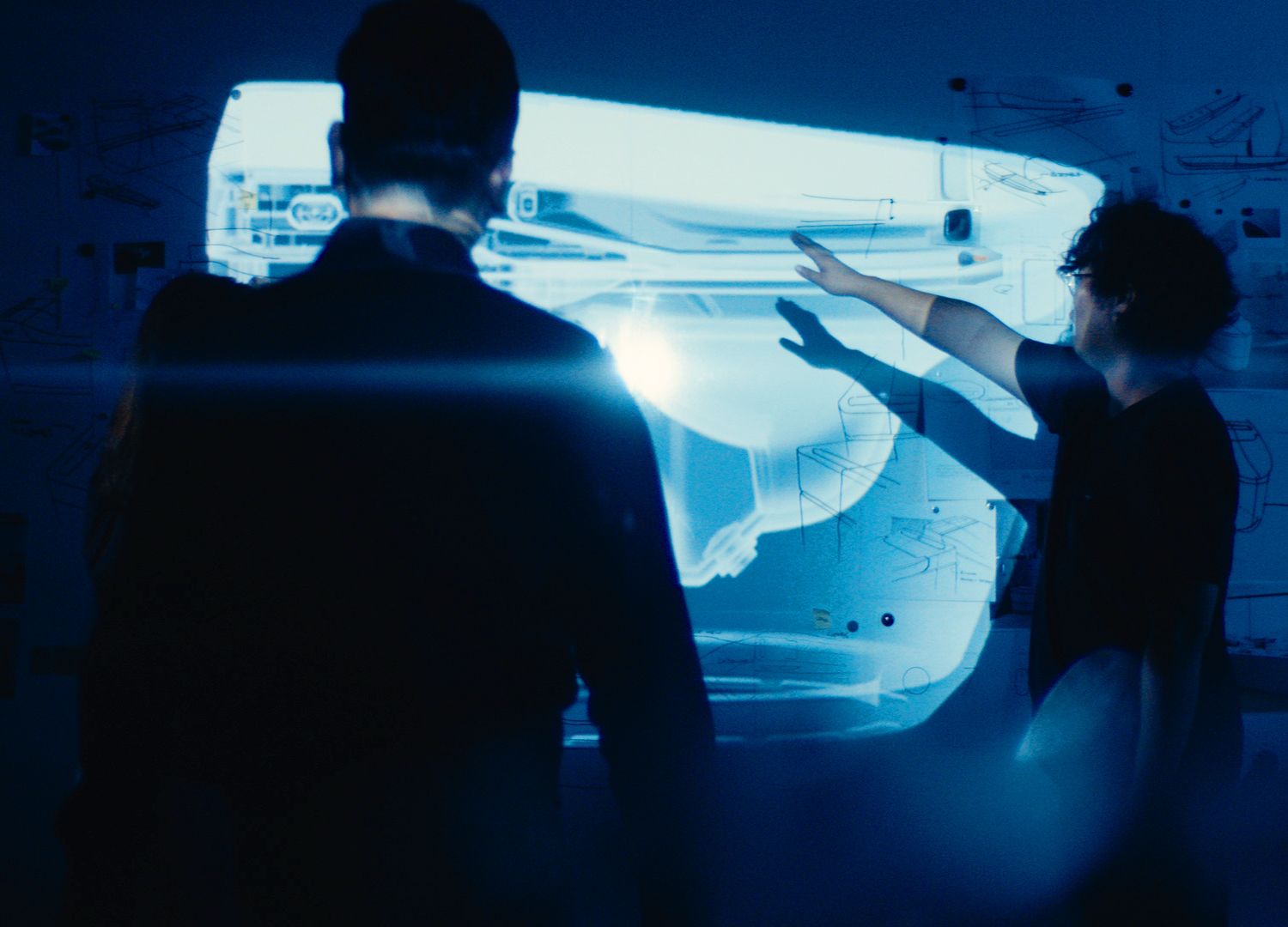
We look at these trends through the lens of each brand in the portfolio and assess how the trends manifest themselves in the context of the values and purpose of each brand. We work out what’s relevant.
So, in the case of urbanization, the United Nations estimates that by 2050, 68% of the world’s population will live in urban environments — a prediction that will pose huge challenges.
As a design team, we’ll visualize out to 2050 to understand what that will look like — and ask ourselves how we’re going to prepare for such a significant change. We’ll then project forward, laying out a long-term roadmap to meet the challenges of that trend.
And we do that for all the macro trends.
With health and well-being, there’s been a paradigm shift over the last few years in the ways people work. More people are working from home and often working longer hours. This puts huge pressure on people’s mental and physical health — water is a beautiful element that can, in numerous ways, help reduce and alleviate that stress.
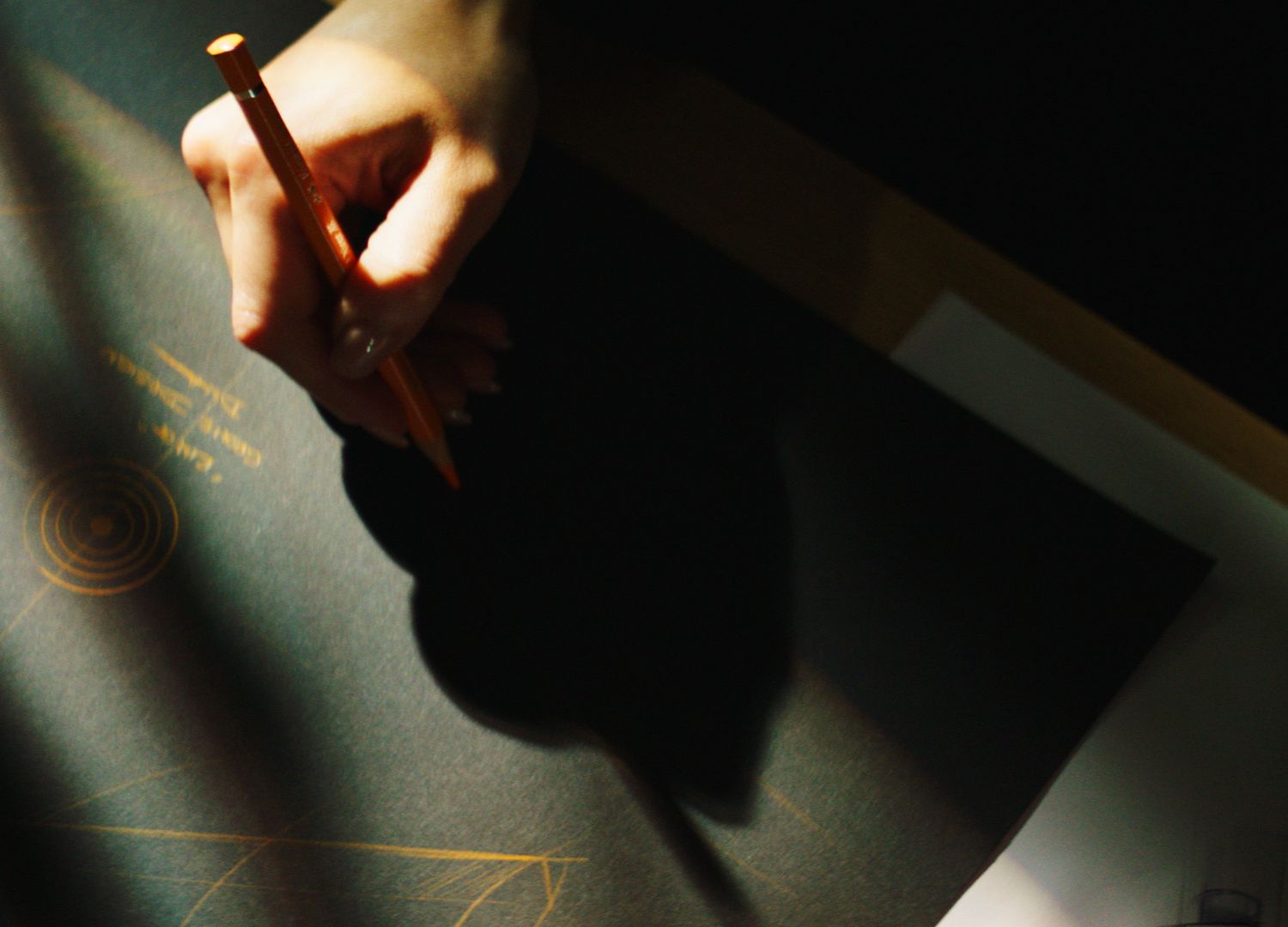
The GROHE SPA concept takes its name from the Latin phrase Salus per Aquam — which translates as health through water.
We also look at current trends. GROHE is the Founder Sponsor of the World Architecture Festival and we work closely with architects and designers all over the world to ensure our products — in terms of the selection of color, material, and finish — are relevant to contemporary design trends and will enable the creation of holistic, harmonious environments for consumers.”
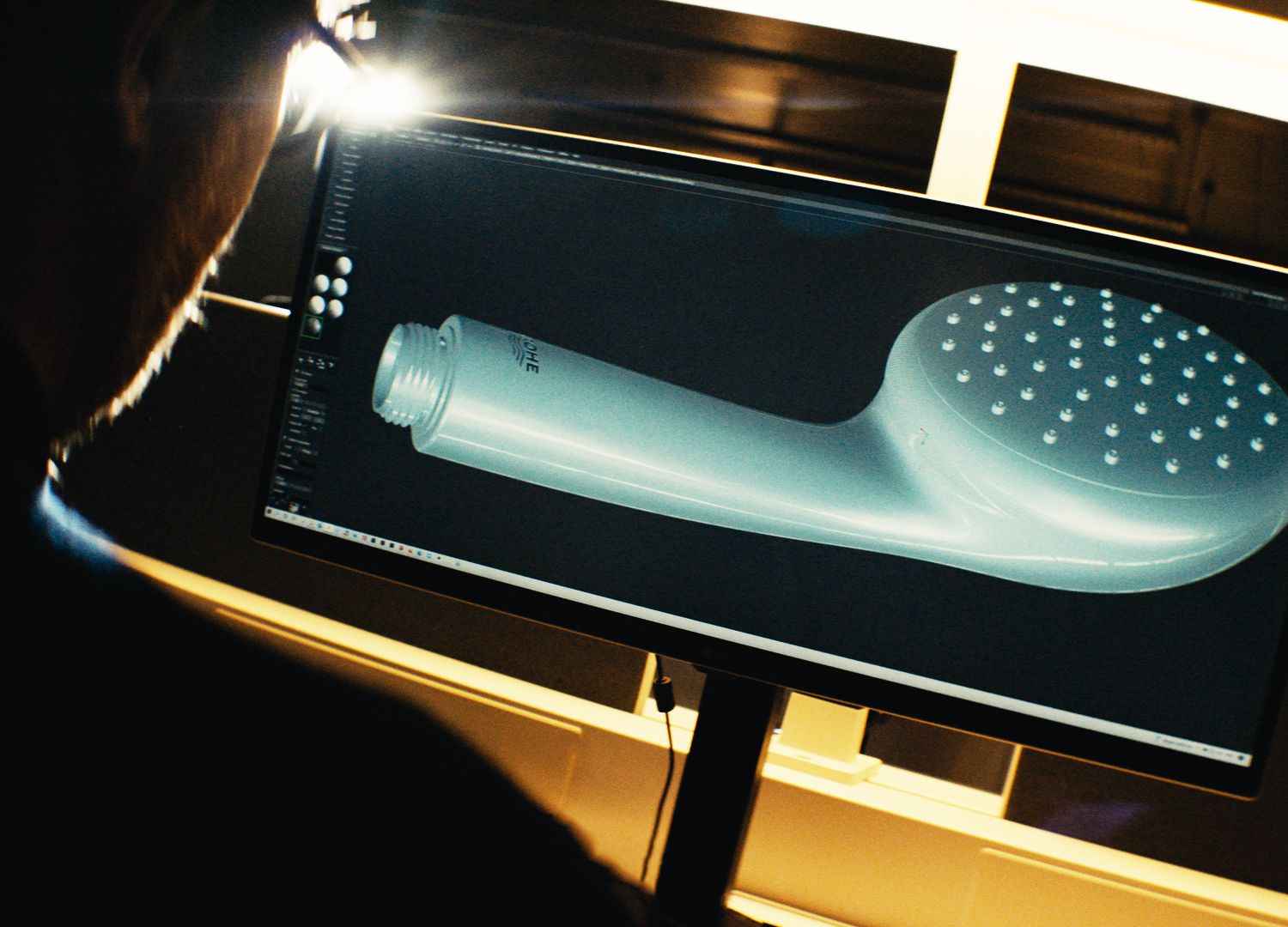
What would you advise a young designer who wants to work for LIXIL Global Design? What are the most important skills you’re looking for?
Paul Flowers:
“First of all, I’d recommend young designers follow the LIXIL Global Design Instagram account.
We’ve set this up, really, for the wider design community, rather than just the organization, and I would suggest spending some time here organization news a real insight into our culture — and how we do things at LIXIL.
I’d advise selecting an area, an organization, or a company that you’re really passionate about organization, feel you can add some value automatically provides you with more energy and enthusiasm for that particular opportunity. So, it starts with you. Make sure you choose something you’re interested in.
The second thing is that there are so many facets to designing now — from the user interface to graphic design, user experience, product design, design strategy, and packaging design. And it’s important to understand how the organization and the opportunity fit in with your own particular discipline. And what avenues do your organization row, to move around after experience t different facets of design?
In terms of what we’re looking for, I would say we are very discerning. We’re looking for really talented, really passionate designers. For me, it’s not so much about university grades — it’s more important that we see passion and, let’s say, objectivity in our work.
And what’s important, as with any team, is that the people we bring on board share our values. When I join the interview process, usually towards the end, I’m primarily coming in to asses the cultural fit. How do the values of an individual work with our team?

At LIXIL, we share common goals and behaviors — one of them is “working with respect”.
We believe there’s diversity in thought. Listening behaviors are important — it’s a real skill. Being respectful and allowing others to express their thoughts and ideas is crucial — everyone has something valuable to input.
Another important behavior that we’re looking for is “experiment and learn”. And, equally importantly, being the sort of person who enables and empowers others to “experiment and learn”.
In the LIXIL Global Design Team, we’re looking for people who will allow their fellow designers the space and freedom to explore the future.”
Finally, Read more on Archup:


